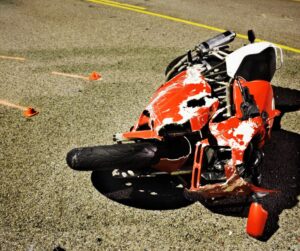
Owning a motorcycle in New York brings a sense of freedom and risks in equal measure. Riders face a unique set of laws that differ significantly from those governing cars and trucks. Among the most misunderstood is how motorcycle insurance actually works. Many riders assume they are protected by New York’s no-fault system, only to learn otherwise after a crash.
Understanding NYC motorcycle insurance requirements and what coverage does and does not include is essential before you ever get on the road. This guide explains the basic insurance rules for New York motorcyclists, the limits of state protection, and what additional coverage may be available to protect you after an accident.
Understanding Motorcycle Insurance in New York
New York’s Vehicle and Traffic Laws, and the Comprehensive Motor Vehicle Insurance Reparations Act, commonly referred to as the “no-fault law,” govern motor vehicle insurance.
New York Motorcycle Accident Insurance Laws
Liability insurance is the foundation of all motor vehicle policies and provides financial protection if you are found legally responsible for causing injury or property damage. All registered motorcycles must maintain active liability insurance at all times. A lapse can result in the suspension of registration, fines, and even vehicle impoundment.
The minimum liability limits under New York law are:
- $25,000 for bodily injury to one person,
- $50,000 for bodily injury to two or more people, and
- $10,000 for property damage.
These are the same minimums that apply to passenger vehicles. However, motorcycle insurance policies differ in one critical way: they do not include personal injury protection (PIP), which forms the core of New York’s no-fault system.
Without PIP coverage, motorcyclists must rely on liability or optional medical coverage for any injuries they sustain. If another driver is at fault, the claim must proceed through that driver’s liability insurer or through a personal injury lawsuit.
Why Motorcycles Are Excluded from No-Fault Insurance
New York’s no-fault insurance system ensures that car accident victims receive prompt medical and wage benefits without proving fault. But motorcycles were intentionally excluded from that system.
The reasoning centers on risk and cost. Motorcycles are considered inherently more dangerous, and crashes often result in higher medical expenses. Lawmakers feared that including them in the no-fault system would lead to increased insurance premiums across the board.
As a result, injured motorcyclists must pursue compensation through traditional fault-based claims. That means proving that another party’s negligence caused the crash. It also means that your own insurer does not automatically cover medical expenses, lost wages, and pain and suffering.
Types of Coverage Every Rider Should Consider
Because New York’s no-fault system does not protect motorcyclists, optional coverages can make a significant difference after an accident.
1. Liability Coverage
The law requires liability insurance, but many riders select limits higher than the minimum. A serious crash can lead to costs that quickly exceed basic coverage. Higher limits offer greater protection if you are at fault for an accident that injures another person.
2. Uninsured and Underinsured Motorist Coverage (UM/UIM)
This coverage protects you if another driver causes a crash and does not have sufficient insurance or any insurance at all. In a city as large as New York, uninsured drivers are not uncommon. UM/UIM coverage allows you to collect compensation from your own insurer when the at-fault driver cannot pay.
3. Medical Payments (MedPay)
MedPay covers medical expenses for you and your passengers regardless of fault. While optional, it is one of the most valuable additions a motorcyclist can make to their policy. It helps bridge the gap created by the absence of PIP protection.
4. Collision and Comprehensive Coverage
Collision coverage pays for repairs to your motorcycle after an accident, while comprehensive coverage applies to non-collision losses such as theft, vandalism, or weather damage. For many riders, the motorcycle itself represents a significant investment, making both coverages practical choices.
Having these protections in place before an accident can dramatically improve your ability to recover financially afterward. Each provides a layer of protection that New York’s standard liability-only policy does not.
How Coverage Affects Motorcycle Accident Claims
When an accident occurs, the type of insurance you carry determines your options for recovery. Because no-fault benefits exclude motorcycles, you cannot simply submit medical bills to your own insurer. Instead, recovery depends on the cause of the crash.
If another driver’s negligence caused the collision, you can file a liability claim against their insurer. Suppose that the driver has minimal coverage; your own uninsured or underinsured motorist protection may apply. If no other party was involved, such as in a single-vehicle accident, your options are limited to any optional MedPay or health insurance you carry.
Understanding these distinctions before an accident occurs helps prevent costly surprises later. Riders who maintain robust insurance coverage are in a far better position to recover financially after an unexpected crash.
When to Contact an Attorney
Motorcycle insurance claims in New York can be complex, especially when serious injuries are involved. Insurers may dispute liability, reduce payouts, or deny coverage altogether. An experienced attorney can interpret policy language, identify all possible sources of compensation, and effectively manage communications with insurance companies.
At Greenspan & Greenspan, our attorneys have represented injured riders throughout New York since 1959. We understand the particular challenges motorcyclists face, from securing proper medical care to recovering lost income after an accident. Our goal is to ensure that riders are treated fairly under the law and receive the compensation they need to move forward.
Protecting Yourself Before and After a Crash
Understanding NYC motorcycle insurance is not just about compliance; it is an essential part of financial protection. Because New York excludes motorcycles from no-fault coverage, riders face additional risk that proper insurance planning can help reduce.
Whether you are reviewing your policy or dealing with the aftermath of a crash, legal advice can clarify your rights and next steps. Greenspan & Greenspan offers guidance rooted in decades of experience with motorcycle insurance coverage in New York. Contact our office today to discuss your options and protect your future on the road.







